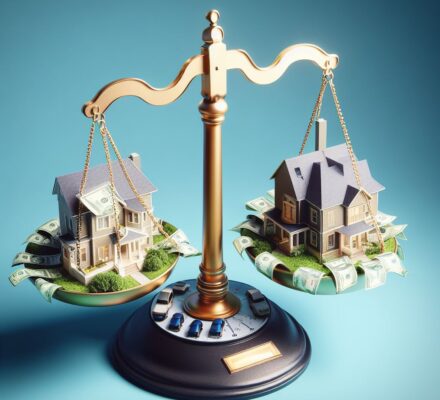Have you ever wondered why certain factors can have such a significant impact on the fair market value in 1031 exchanges?
Well, get ready to delve into the intricacies of this complex topic.
In this article, we will explore how location, condition, market trends, comparable sales, and economic factors can all play a crucial role in determining the value of properties involved in 1031 exchanges.
So, sit back and prepare to uncover the secrets behind the fluctuating fair market values in these exchanges.
Key Takeaways
- Geographical location and proximity to amenities and transportation infrastructure play a significant role in determining fair market value in 1031 exchanges.
- The condition of the property, including the physical structure, systems, interior finishes, exterior, and landscaping, also impacts fair market value.
- Market trends, such as supply and demand dynamics, affect fair market value in 1031 exchanges. High demand and limited supply increase prices, while oversupply and low demand decrease prices.
- Comparable sales data is crucial in assessing fair market value. Analyzing prices of similar properties in terms of size, location, and condition helps in determining the accurate value.
Location: A Key Factor in Fair Market Value
Location plays a crucial role in determining the fair market value in 1031 exchanges. The value of a property is heavily influenced by its geographical location due to factors such as proximity to amenities, transportation infrastructure, and the overall desirability of the area. Properties located in prime locations, such as bustling city centers or popular tourist destinations, tend to have higher fair market values compared to those in less desirable locations.
When it comes to 1031 exchanges, investors must carefully consider the location of the replacement property. The fair market value of the new property should be comparable to or higher than the relinquished property in order to fulfill the requirements of a tax-deferred exchange. Additionally, the location should align with the investor’s investment goals and strategy. For example, if an investor seeks long-term appreciation, they might choose a property located in an up-and-coming neighborhood with potential for future growth.
Understanding the impact of location on fair market value is vital in making informed investment decisions in 1031 exchanges. By carefully analyzing the location and its potential for growth or stability, investors can ensure they’re acquiring replacement properties that meet their financial objectives.
Transitioning into the subsequent section about ‘condition: assessing property quality’, investors mustn’t only consider the location but also evaluate the overall condition of the replacement property to accurately determine its fair market value.
Condition: Assessing Property Quality
How can you assess the quality of a property’s condition in a 1031 exchange? Assessing property quality is a crucial step in determining its fair market value during a 1031 exchange. To accurately evaluate a property’s condition, you should consider several factors.
First, inspect the physical structure of the property, including the foundation, walls, roof, and overall maintenance. Look for signs of wear and tear, such as cracks, water damage, or structural issues. Additionally, evaluate the property’s systems, such as plumbing, electrical, and HVAC, to ensure they’re in good working order.
Next, review the property’s interior finishes and features. Consider the quality of the flooring, paint, fixtures, and appliances. Take note of any outdated or damaged elements that may require repair or replacement.
Furthermore, examine the property’s exterior and landscaping. Assess the condition of the lawn, trees, and any other outdoor amenities. Evaluate the property’s curb appeal and potential for future improvements.
Lastly, consider any environmental factors that may impact the property’s condition. This includes evaluating the property’s susceptibility to natural disasters, proximity to hazardous areas, or any potential environmental contamination.
Market Trends: Understanding Supply and Demand
To accurately assess the fair market value of a property in a 1031 exchange, you need to understand the impact of market trends on supply and demand. Market trends play a crucial role in determining the value of a property, as they directly affect the balance between supply and demand. When there is high demand for properties and a limited supply, prices tend to increase. Conversely, when there is an oversupply of properties and low demand, prices tend to decrease.
To better understand how market trends impact supply and demand, let’s take a look at the following table:
| Market Trend | Supply | Demand |
|---|---|---|
| Strong | Low | High |
| Stable | Balanced | Balanced |
| Weak | High | Low |
In a strong market trend, there is a low supply of properties available, but high demand from buyers. This creates a competitive environment, driving prices up. Conversely, in a weak market trend, there is an oversupply of properties and low demand, resulting in lower prices.
Understanding these market trends is essential in accurately determining the fair market value of a property in a 1031 exchange. By considering the current supply and demand dynamics, you can make informed decisions regarding your investment.
Transitioning to the next section, it is also crucial to evaluate comparable sales to further assess property prices.
Comparable Sales: Evaluating Property Prices
To accurately evaluate property prices and determine fair market value in a 1031 exchange, it’s important to consider comparable sales data. Comparable sales, also known as ‘comps,’ are properties that are similar to the subject property in terms of size, location, condition, and other relevant factors. By analyzing the prices at which these comparable properties have recently sold, you can gain valuable insights into the fair market value of the property you’re considering.
When evaluating comparable sales data, it’s crucial to ensure that the properties being compared are truly similar. Factors such as location, size, age, condition, amenities, and proximity to schools, shopping centers, and transportation can all have a significant impact on property prices. By selecting comparable sales that closely match the subject property in these aspects, you can make a more accurate assessment of its fair market value.
In addition to selecting appropriate comps, it’s important to consider the timing of the sales. Real estate markets can fluctuate, and the prices of comparable properties may have changed since they were sold. Therefore, it’s crucial to use recent sales data to ensure that the fair market value is based on current market conditions.
Economic Factors: Impact on Property Values
Economic factors significantly influence the value of properties in 1031 exchanges. These factors can have a profound impact on the fair market value of a property and play a crucial role in determining its worth.
One of the key economic factors that affect property values is the overall state of the economy. When the economy is thriving and experiencing growth, property values tend to rise as well. Conversely, during economic downturns or recessions, property values may decline due to reduced demand and financial constraints.
Interest rates also play a significant role in property values. When interest rates are low, borrowing becomes more affordable, which can stimulate demand for properties and drive up their values. On the other hand, high interest rates can deter potential buyers and lead to a decrease in property values.
The availability of financing options is another economic factor that impacts property values. When lenders are willing to provide favorable loan terms and conditions, it becomes easier for buyers to secure financing, which can increase demand and push property values higher. Conversely, limited access to financing options can constrain demand and lead to lower property values.
Additionally, local economic factors such as job growth, population trends, and infrastructure development can greatly influence property values. Areas with strong job markets and growing populations tend to experience increased demand for properties, resulting in higher values. Conversely, areas with stagnant economies and declining populations may see a decline in property values.
Frequently Asked Questions
What Are the Tax Implications of a 1031 Exchange?
When evaluating the tax implications of a 1031 exchange, it is important to consider factors such as the fair market value of the property involved, as this value will impact the amount of tax owed.
How Does the Timing of a 1031 Exchange Affect the Fair Market Value of the Property?
The timing of a 1031 exchange can impact the fair market value of the property. Due to market fluctuations, the value may increase or decrease depending on when the exchange is executed.
Can Personal Property Be Included in a 1031 Exchange?
Yes, personal property can be included in a 1031 exchange. However, it must be of a like-kind nature and meet the requirements set forth by the IRS to qualify for tax deferral.
Are There Any Restrictions on the Types of Properties That Can Be Exchanged in a 1031 Exchange?
There are restrictions on the types of properties that can be exchanged in a 1031 exchange. These restrictions ensure that the properties are like-kind and used for business or investment purposes.
How Does the Financing of a 1031 Exchange Impact the Fair Market Value of the Property?
The financing of a 1031 exchange can impact the fair market value of the property by affecting the overall cost and terms of the loan, which in turn can influence the buyer’s perception of the property’s value.




